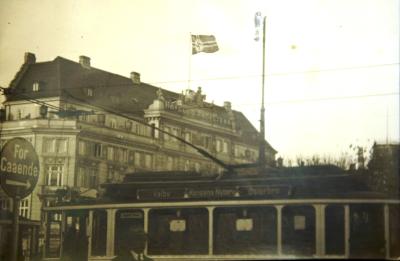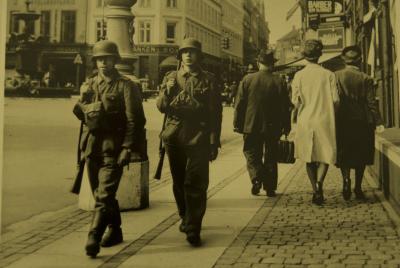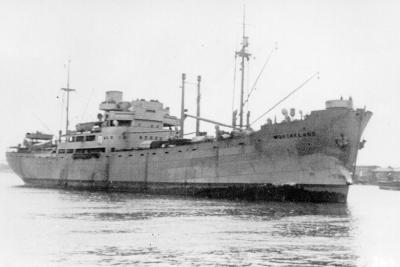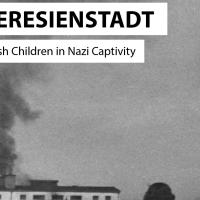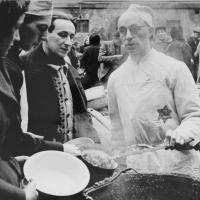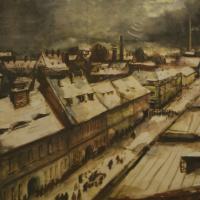The Persecution of Danish Jews
In august 1943 the policy of collaboration between the Danish government and the German occupational force collapses and the Danish government resigns. The Germans now plan to arrest and deport the Danish Jews. This action against the Danish Jews takes place between October 1st and 2nd 1943.
From collaboration policy to persecution and deportation
On 29 August 1943, the Danish government stepped down. This marked the official end of the policy of collaboration with the German occupation forces that had been in force since 9 April 1940. As a consequence of the collaboration policy, no anti-Jewish law had been enacted in Denmark separating Jews from the rest of the population. Jews in Denmark were thus protected as a result of this policy. At the same time, however, 21 Jewish refugees were deported from Denmark and sent back to Nazi Germany. From Germany they were further deported to concentration or death camps and most of them murdered. After the government stepped down, the Germans initiated a plan to arrest and deport the Jews from Denmark.
Read more about the background for the deportation of the Jews
During the night between 1 and 2 October 1943, German soldiers and their Danish henchmen arrested Jews in their homes. During the weeks that followed, more Jews were caught while trying to flee to Sweden. Sweden was neutral during the war and therefore a haven for refugees. About 17,000 Danes fled to Sweden, 8,000 of whom were Jews.
Destination: Theresienstadt
On 2 October, a train left Aalborg Station in northern Jutland and stopped in Randers and Kolding. The train passengers were Jewish prisoners who were deported to Theresienstadt in what is today the Czech Republic.
On the same day, the ship Wartheland sailed from Langelinie in Copenhagen to Swinemünde (now Swinouscie in Poland). On the ship were 198 Jewish and 150 communist prisoners. When they arrived in Swinemünde, they were all ordered to disembark and were then herded into cattle wagons. The communists were headed for the concentration camp Stutthof near Danzig (now Gdansk), and the Jews were sent to Theresienstadt 60 km north of Prague.
One of the communist prisoners, Member of Parliament Martin Nielsen, described after the war how he had watched the Jewish prisoners as they left the ship and walked to the cattle wagons in Swinemünde:
There are old, grey-bearded men with skullcaps, who could still be met before the war in the Adelgade and Borgergade neighbourhood (in Copenhagen, ed.); there are old women trembling with palsy, leaning on their canes; there are proud young clean-shaven men, clearly intellectual types.
They are still standing tall. There are youths and young women with children in their arms or by the hand. The children are whimpering or crying. The women are crying or staring straight ahead with empty eyes and faces that look as if they are carved in stone. As one of the first, a young woman descends the gangplank with her child in her arms. The child, who does not look to be a year old, is sobbing. The young mother hugs it closer and tries to calm the baby, while the Germans curse her as she walks down the gangplank with her precious burden in her arms. My heart stands still a moment. A thought goes through my mind: ’What if it was your child and your wife who was walking there?’
It was harsh treatment the shocked Jews were subjected to. The German soldiers were arrogant and brutal as they pushed the Jews into the cattle cars.
From Denmark to Theresienstadt
Theresienstadt
The first Jews were transported from Prague to Theresienstadt in November 1941. Until July 1942 it was a closed camp. From the summer of 1942 the camp was called 'ghetto and the following year it was renamed 'Jewish residential district'. In this text, There-sienstadt is referred to as a concentration camp.
In the fall of 1943, four so-called ’Jew transports’ left Denmark. The first three went directly to Theresienstadt, while the last went to the concentration camps Ravensbrück and Sachsenhausen; however, most of the prisoners later arrived at Theresienstadt. The people who were deported in these transports were Jews, or they were considered Jews according to the Nuremberg laws. A total of 470 people were sent from Denmark to Theresienstadt. Most of them were Danish citizens, about one-third were stateless, and a few were citizens from other countries. Among the prisoners were people from all levels of society: The oldest was 89 at the time of deportation, and the youngest was just a few months old. Five children were born in Theresienstadt, but only three of them survived the harsh conditions. Among the prisoners from Denmark, there were 48 children, aged 0 to 15 years. One of them was 5-year-old Birgit.
Watch the documentary "THERESIENSTADT - Danish Children in Nazi Captivity"
The transports
Transport 1
Departed from Aalborg by train, stopping in several cities in Jutland, on 2 October 1943
Arrived at Theresienstadt with 83 prisoners on 5 October 1943
Transport 2
Departed from Copenhagen by ship on 2 October 1943
Arrived at Theresienstadt with 198 prisoners on 6 October 1943
Transport 3
Departed from Horserød camp in North Zealand on 13 October 1943
Arrived at Theresienstadt with 175 prisoners on 14 October 1943
Transport 4
Departed from Horserød camp in North Zealand on 23 November 1943
Arrived at Sachsenhausen/Ravensbrück with 16 prisoners on 23 November 1943. Fourteen of these prisoners arrived at Theresienstadt in January-April 1944
